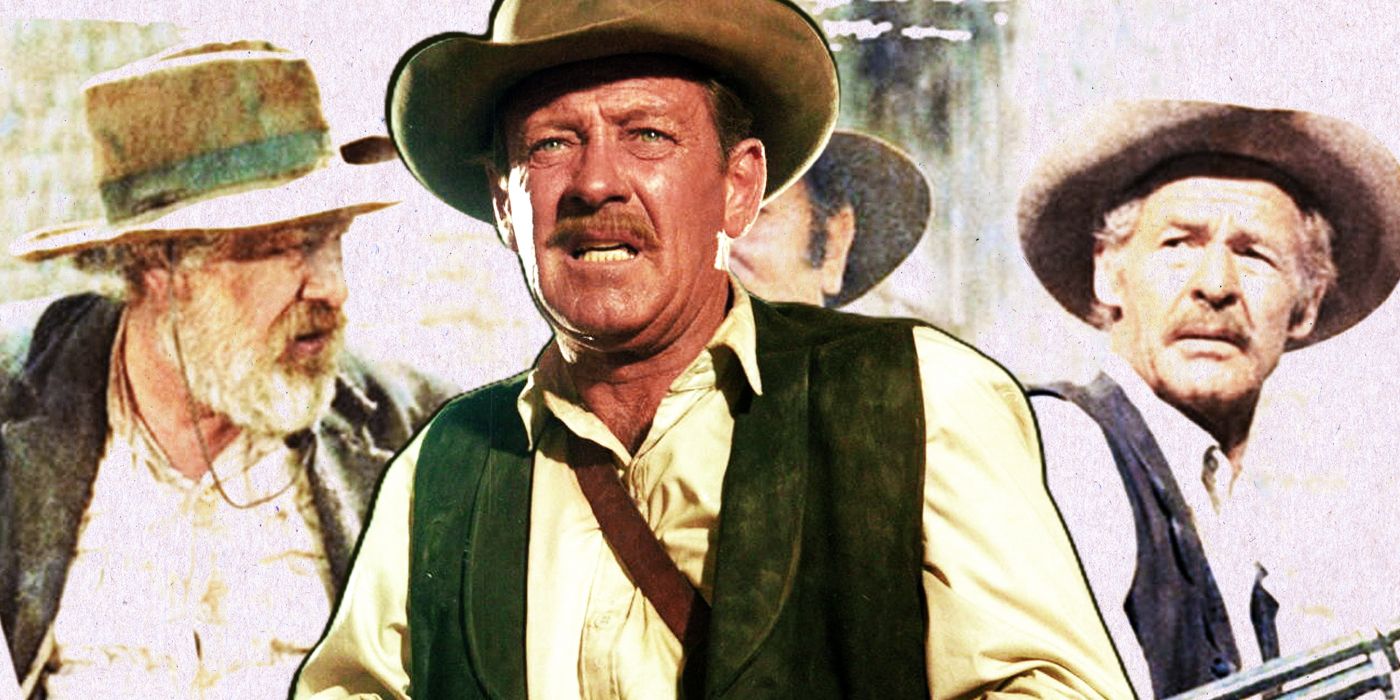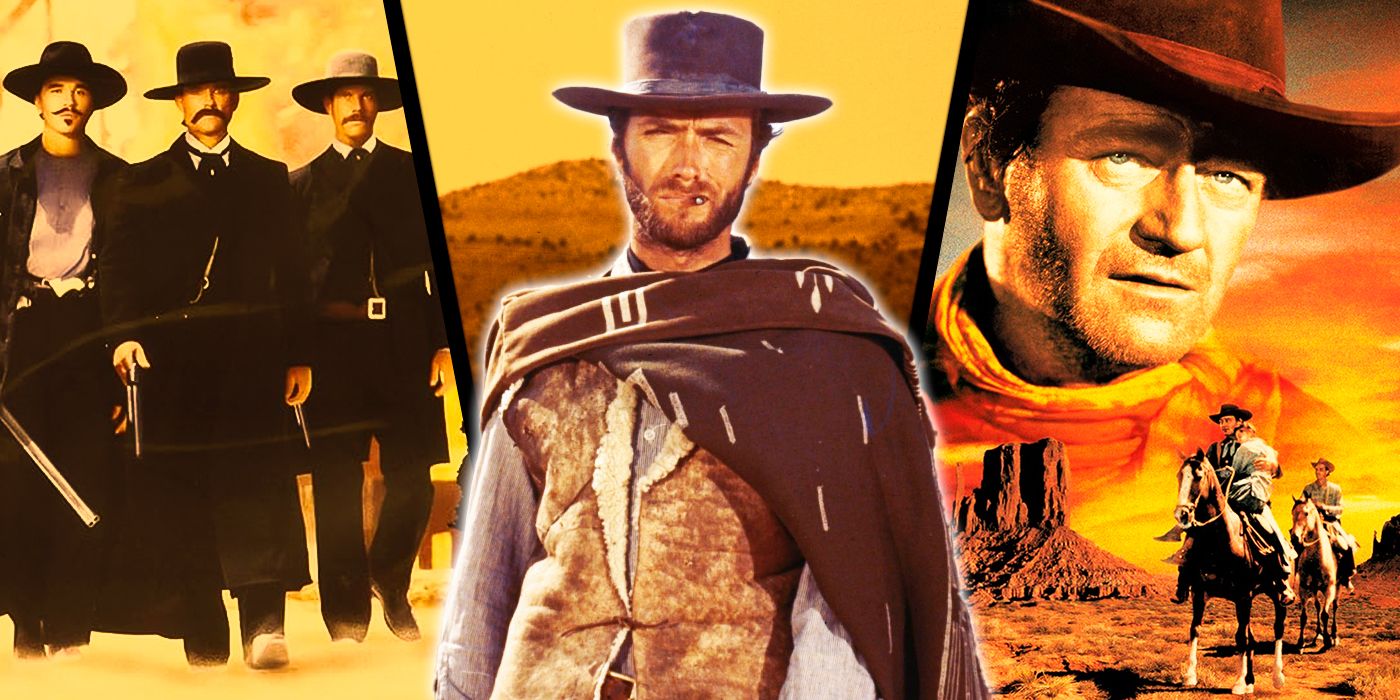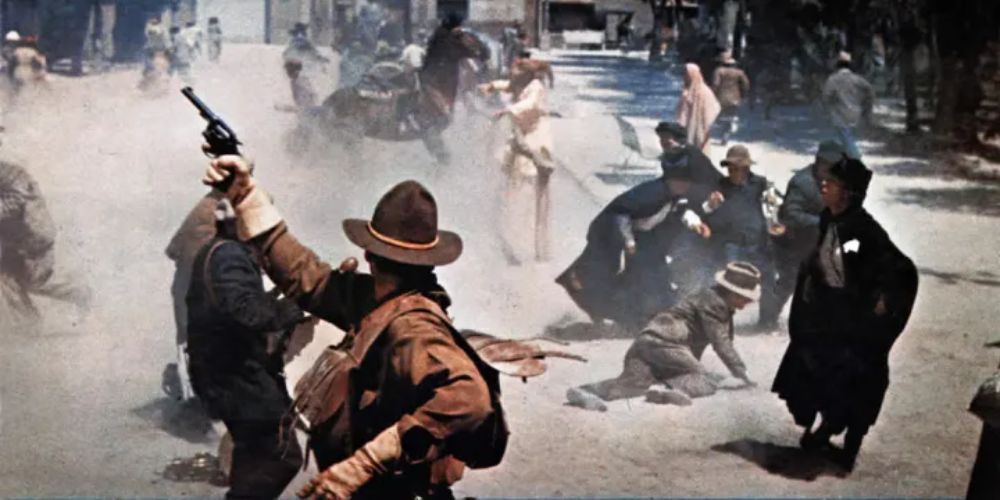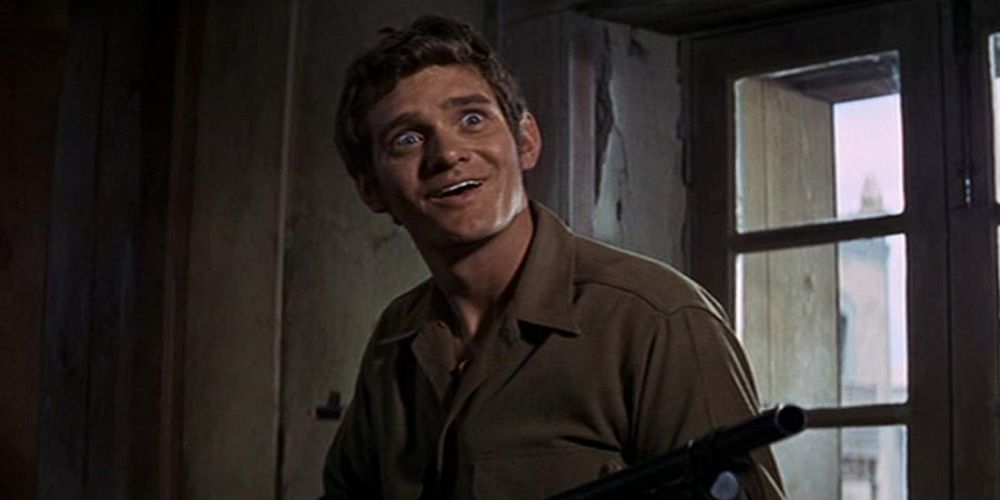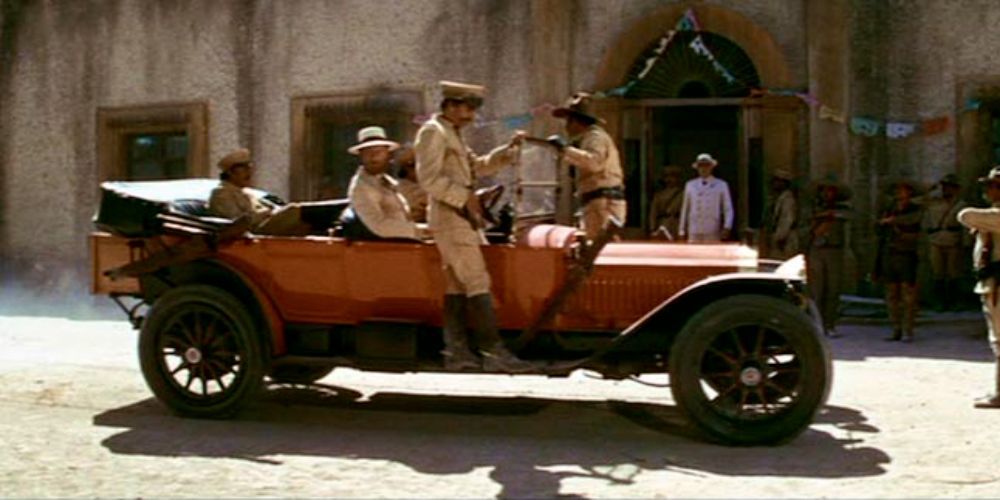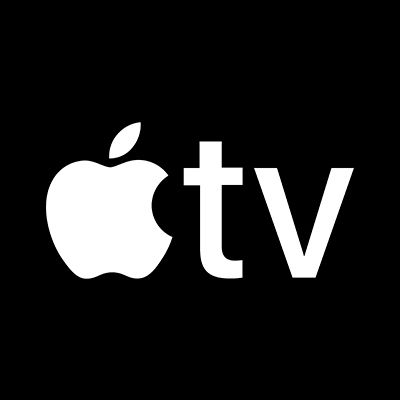Quick Links
Sam Peckinpah's epic revisionist Western The Wild Bunch is a definitive work of the New Hollywood movement that is not only one of the best Westerns ever made, but one of the greatest films of all time, regardless of genre. Released in 1969 during the first few years of the New Hollywood movement, The Wild Bunch deconstructs many aspects of the mythos of traditional Westerns. By challenging the classical structure of the Hollywood Golden Era Western, The Wild Bunch helped signify the passing of the torch from the glory days of the Hollywood studio system to the rise of the independent-minded auteur.
In 1999, the Library of Congress selected The Wild Bunch for preservation in the National Film Registry due to the film's immense impact on both American culture and the movie industry as a whole. An amalgamation of counterculture sentiments, The Wild Bunch encapsulated the country's changing attitudes toward violence, capitalism, and the mythology of America's heroic past. In terms of filmmaking, The Wild Bunch utilized revolutionary editing and cinematography that offered audiences an unprecedentedly brutal, action-packed movie-going experience. The Wild Bunch's combination of progressive themes and formal experimentation led the film to have an invaluable influence on both the future of the Western genre and international cinema as a whole.
The Wild Bunch Brought the Western Into a New Era
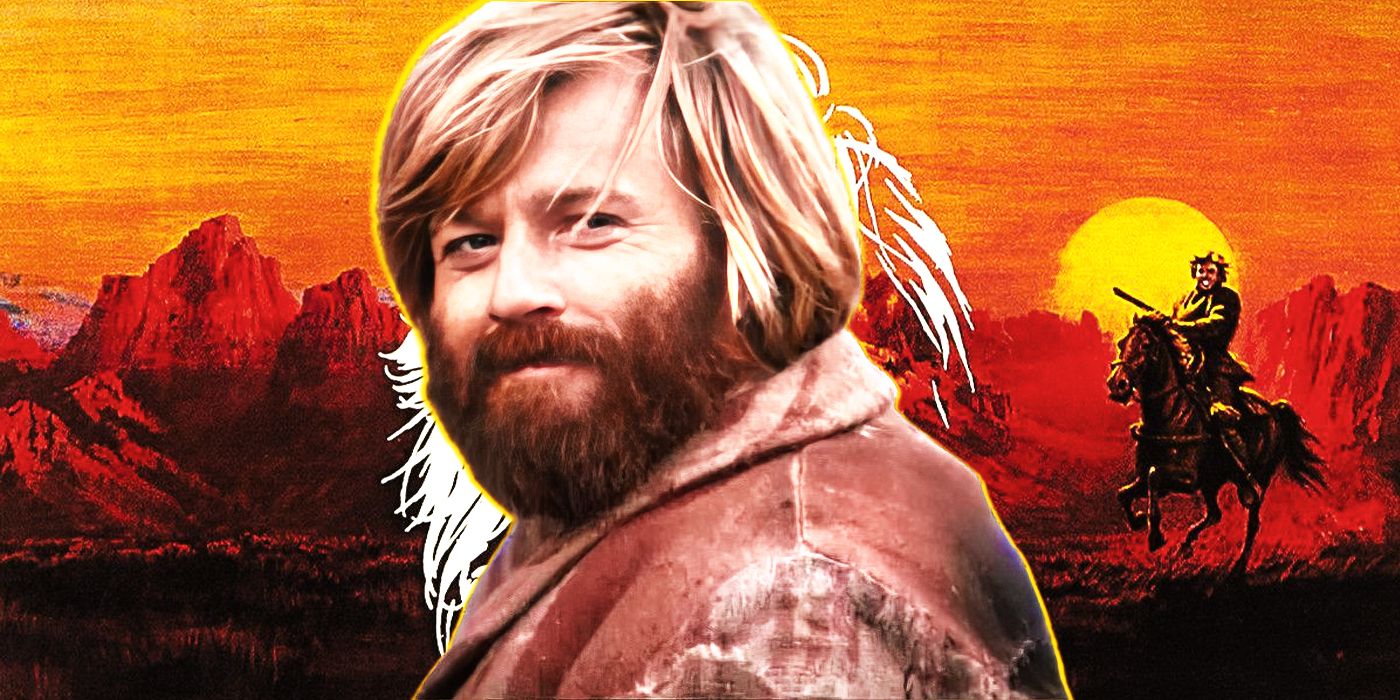
How This Landmark Western Starring an MCU Villain Became an Iconic Meme
Robert Redford is best known today for portraying the MCU's Alexander Pierce, but he's also the face of an iconic meme.- When making The Wild Bunch, production paid a small town to delay installing electricity and power lines so that it wouldn't ruin the movie scenery.
Featuring an all-star cast that includes iconic leading men such as William Holden and Robert Ryan with legendary character actors such as Ben Johnson and Strother Martin, The Wild Bunch focuses on Pike Bishop, an aging outlaw who desires to retire after committing one final robbery. Following a disastrous robbery thwarted by Bishop's former partner Deke Thornton, Bishop and his surviving gang members set out to execute a heist for the Mexican General Mapache, stealing weapons from the U.S. Army in exchange for gold. While working for General Mapache, Bishop's gang remains pursued by Thornton and his crew of bounty hunters. Eventually, The Wild Bunch climaxes with one of the most significant shootouts in cinematic history.
The Western is one of cinema's oldest genres, with films such as Kidnapping by Indians and The Great Train Robbery premiering in 1899 and 1903 respectively. Although many Westerns debuted during the silent era, the genre did not truly explode in popularity until the late 1930s. In 1939, Westerns such as Stagecoach, Dodge City, and Destry Rides Again helped morph the Western into an A-list genre. For the next two decades, Westerns became one of Hollywood's most popular genres, with over 100 films released each year. Being an innately American genre, the Western explored themes pertaining specifically to the United States.
Golden Era Westerns Shaped the Mythology of the Old West
|
The Wild Bunch American Film Institute Rankings |
|
|---|---|
|
AFI's 100 Years...100 Movies (10th Anniversary) |
79th |
|
AFI's 10 Top 10 Westerns |
6th |
|
AFI's 100 Years...100 Thrills |
69th |
Directors such as John Ford, Howard Hawks, and Raoul Walsh were some of the most notable cinematic contributors to the creation of the mythology of the Old West. The themes of their Westerns romanticized the formation of the United States as a civilized nation, glorifying the figures who shaped the development of the country. Golden Era Westerns had clear-cut heroes and villains. The United States Cavalrymen, cowboys, and lawmen were the heroes, the figures who assisted in taming the Wild West and bringing it into the modern age. Indians, outlaws, and corrupt officials were the villains, the characters who threatened the advancement of civilization. Classical Westerns transformed historical individuals like Wyatt Earp, Doc Holliday, Jesse James, and Davy Crockett into folk heroes.
The heyday of the traditional Western coincided with the strict implementation of the Hollywood Production Code, also known as the Hays Code. Under the Production Code, on-screen violence had to be kept to a minimum. Bullet wound impacts, blood splats, and stab wounds could not result in any graphic imagery whatsoever. Another Production Code rule that greatly affected the Western was that heroes had to win while villains always had to pay for their crimes. Death or prison sentences were acceptable fates for movie villains, while all criminal activities had to appear morally reprehensible. By the mid-1960s, with Hollywood studio power at an all-time low, the Production Code crumbled, paving the way for The Wild Bunch to inflict upon audiences a level of violence never seen before.
Throughout the 1950s, the Western genre began undergoing a substantial change, slowly becoming more violent and more critical of the mythology of the Old West that took form during the 1940s. Low-budget auteurs such as Anthony Mann and Budd Boetticher directed prominent Westerns such as The Man from Laramie and The Tall T, which many now view as landmark works that bridged the gap between the Golden Era Western and the revisionist Western. Even John Ford, the single most important filmmaker of Golden Era Westerns, began making movies that criticized the mythos of the Old West that he played a major role in creating. Ford Westerns such as Fort Apache and The Searchers dismantled notions of American heroism, demonstrating how mythmaking narratives turn complex individuals into false idols. These more thematically rich Westerns of the 1950s ushered in a new era of Western cinema that would directly lead to the revisionist Westerns of the 1960s and 1970s.
The Wild Bunch Presents Audiences With Unparalleled Violence
|
Academy Award Nominations |
|---|
|
Best Writing, Story and Screenplay Based on Material Not Previously Published or Produced |
|
Best Music, Original Score for a Motion Picture (not a Musical) |
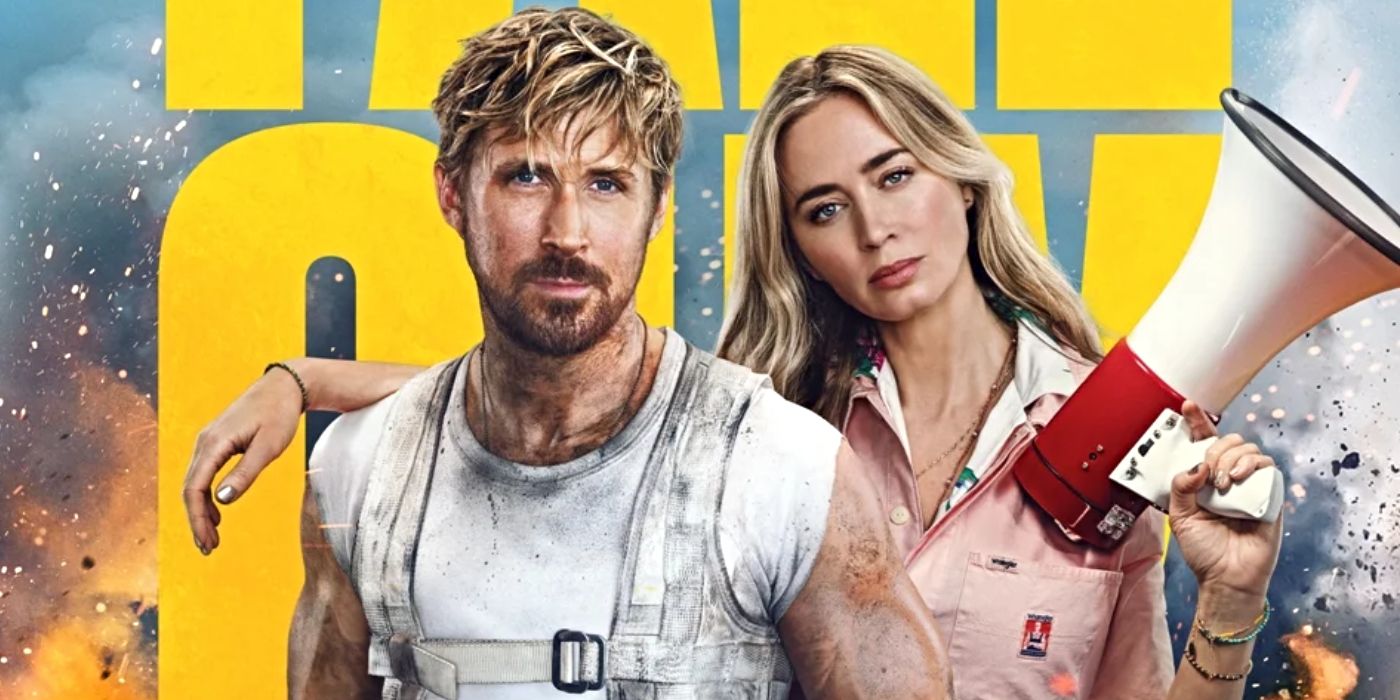
Ryan Gosling Wants The Fall Guy Co-Star Emily Blunt to Direct a Western
Exclusive: Ryan Gosling reveals that he wants to see his The Fall Guy co-star Emily Blunt make her directorial debut with a Western.The termination of Hollywood's Production Code and the emergence of the revisionist Western subgenre was the perfect storm that allowed The Wild Bunch to come to fruition in 1969. First and foremost, The Wild Bunch is a Western about violence, both formally and thematically. Sam Peckinpah commenced his career as a director of television Westerns, working on shows such as Broken Arrow, The Rifleman, and The Westerner. In 1962, Peckinpah transitioned to feature filmmaking, directing the seminal Western Ride the High Country. Despite his success in the genre, Westerns left Peckinpah feeling discontent due to their sanitized depictions of violence.
The rules of the Production Code made it so that on-screen violence looked harmless. A gun went off, leaving a cloud of smoke and a body on the floor without any visualization of a wound. By sanitizing cinematic violence, the Production Code inadvertently contributed to audiences becoming desensitized to violence. The lack of realistic movie violence left audiences rooting for violent acts to take place, eagerly awaiting climactic showdowns where the "hero" was the one who was best equipped to inflict violence upon another. Peckinpah detested this sterile aesthetic of violence and wished to craft a film in which violence appeared true to form, meaning brutal and horrific.
Two years before the premiere of The Wild Bunch, Arthur Penn's Bonnie and Clyde was the first major Hollywood production to test audiences' reactions to excessive movie violence. Bonnie and Clyde proved to be a massive hit, however, despite the never-before-seen violence, the film still portrayed violence in a romanticized manner. With The Wild Bunch, Peckinpah pushed screen violence even further, displaying to audiences just how gritty, savage, and agonizing violence can be. To achieve this feat, Peckinpah, in collaboration with editor Louis Lombardo and cinematographer Lucien Ballard, created a ballet of violence unequaled by any film before it.
Revolutionary Editing and Cinematography Make The Wild Bunch a Unique Cinematic Experience
- According to The Wild Bunch's editor, Lou Lombardo, the film features more cuts than almost any other Technicolor film.
The Wild Bunch's action sequences are a visceral experience made possible by montage-style editing that fuses quick cutting between normal and slow-motion images. One moment a character is rapidly firing his gun while the next moment the victim is in slow-motion falling off a rooftop. Additionally, Peckinpah and Lombardo utilized overlap editing, which is a technique that repeats the same image over from multiple different angles. While techniques such as montage editing, slow-motion, and overlap editing existed before The Wild Bunch's release, no American film had ever melded these distinct techniques together so seamlessly.
Another formal aspect that contributed to The Wild Bunch's revolutionary aesthetic was the telephoto lens. This allowed Ballard to keep both the foreground and background in focus at all times. It also assisted Ballard in shooting The Wild Bunch's famous "hero walk" sequence in which the protagonists approach their climactic battle. The specific telephoto lens used in The Wild Bunch was so rare that Warner Bros. only had one in their possession at the time. One can certainly view The Wild Bunch as the Citizen Kane of action cinema, for there are ways action movies were shot before The Wild Bunch and after The Wild Bunch. The action aesthetic of The Wild Bunch undeniably influenced the future of the Western genre, as immediately seen in the Clint Eastwood Westerns of the 1970s. However, The Wild Bunch's formal inspiration extends well beyond just the Western genre, for directors such as Quentin Tarantino, John Woo, and Kathryn Bigelow have all borrowed from The Wild Bunch's style.
The Wild Bunch Echoes the Horrors of the Tumultuous 1960s
|
The Wild Bunch Review Scores |
|
|---|---|
|
Metacritic |
98 |
|
Rotten Tomatoes |
91 |
|
IMDb |
7.9 |
|
Letterboxd |
4.1 |
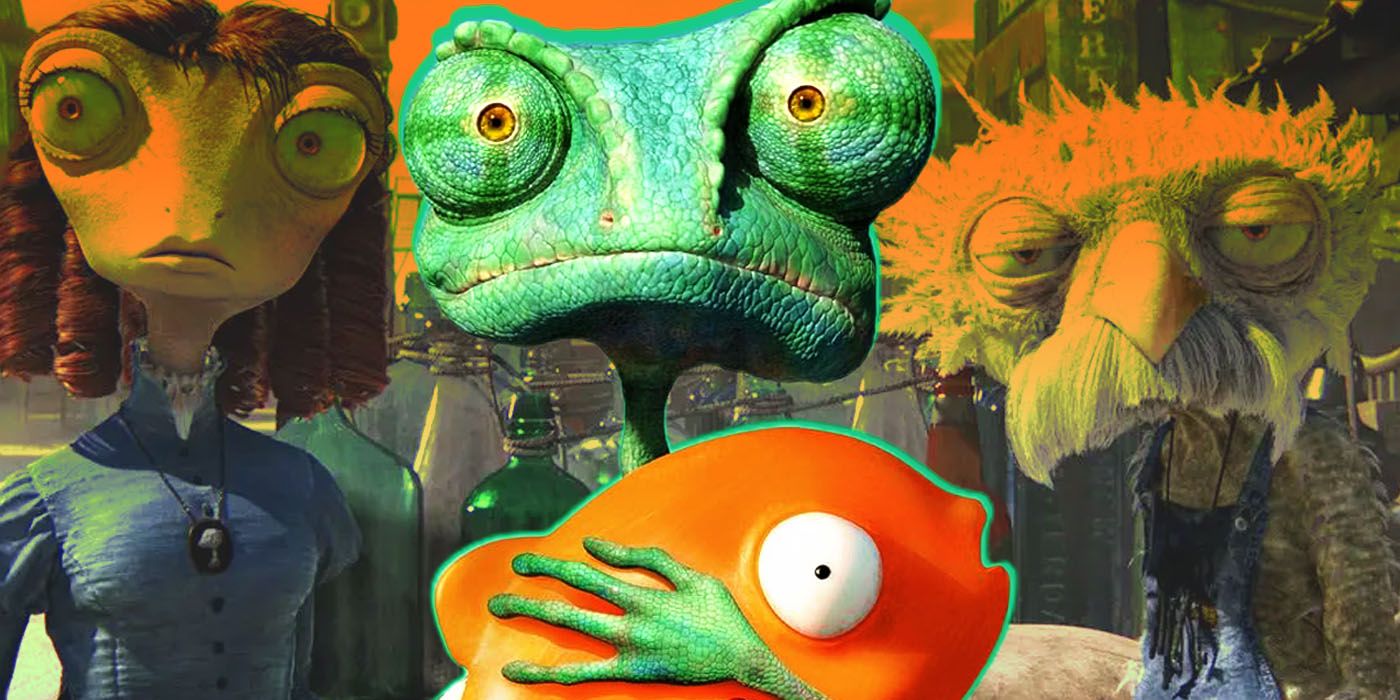
This Family-Friendly Western Movie Is Surprisingly Underrated
Rango is arguably the best animated Western of all time, but it doesn't get nearly the love and attention it deserves.As for The Wild Bunch's thematic examination of violence, the film is indicative of the chaotic world of 1969. By 1965, over 90 percent of United States households had at least one television. For the first time in history, violence existed in everyone's home on a nightly basis. High-profile assassinations, international civil rights-related violence, nuclear fears stemming from the Cold War, and especially, the Vietnam War, appeared every day on television while people supposedly sat in the comfort of their own homes. News channels plastered violent imagery from the Vietnam War on television daily, exploiting the conflict for the sake of ratings and significantly contributing to the ever-increasing societal division within the country.
Therefore, the excessive violence of The Wild Bunch functions as a parallel to the violence occurring in the real world throughout the 1960s. One of The Wild Bunch's most powerful scenes involves a group of American soldiers trying to stop Bishop and his gang from robbing a train. The soldiers, baby-faced and inexperienced, must contend with incompetent leadership that puts them in harm's way, a metaphor for the countless teenagers drafted into the Vietnam War who faced unnecessary early deaths. Many also view the carnage experienced by innocent civilians in The Wild Bunch as a commentary on the millions of senseless civilian deaths that occurred during the Vietnam War.
One word that perfectly describes the late 1960s in America is uncertainty. The counterculture movement grew out of uncertainty. Since the start of World War II, the United States experienced overwhelming nationalistic sentiments. That all changed in the 1960s, for many, especially the younger generations, began to question the stability of American institutions and the reliability of the country's historical legacy. Looking at the situation in terms of good and evil, institutions such as the government, the police, the education system, and the pharmaceutical industry were previously viewed as cornerstone elements that made the United States the greatest country in the world. The counterculture movement realized the widespread corruption that existed within these institutions and began seeing the evil behind the facade. This paradigm shift led many to understand the gray areas of existence, rather than the unwavering black-and-white way of looking at the world.
The Wild Bunch Deconstructs the Heroism of the Old West
|
Organizations To Name The Wild Bunch One Of The Top Films Of All Time |
|---|
|
Empire magazine |
|
The New York Times |
|
Motion Picture Editors Guild |
|
Writers Guild of America |
|
Directors Guild of America |
|
National Society of Film Critics |
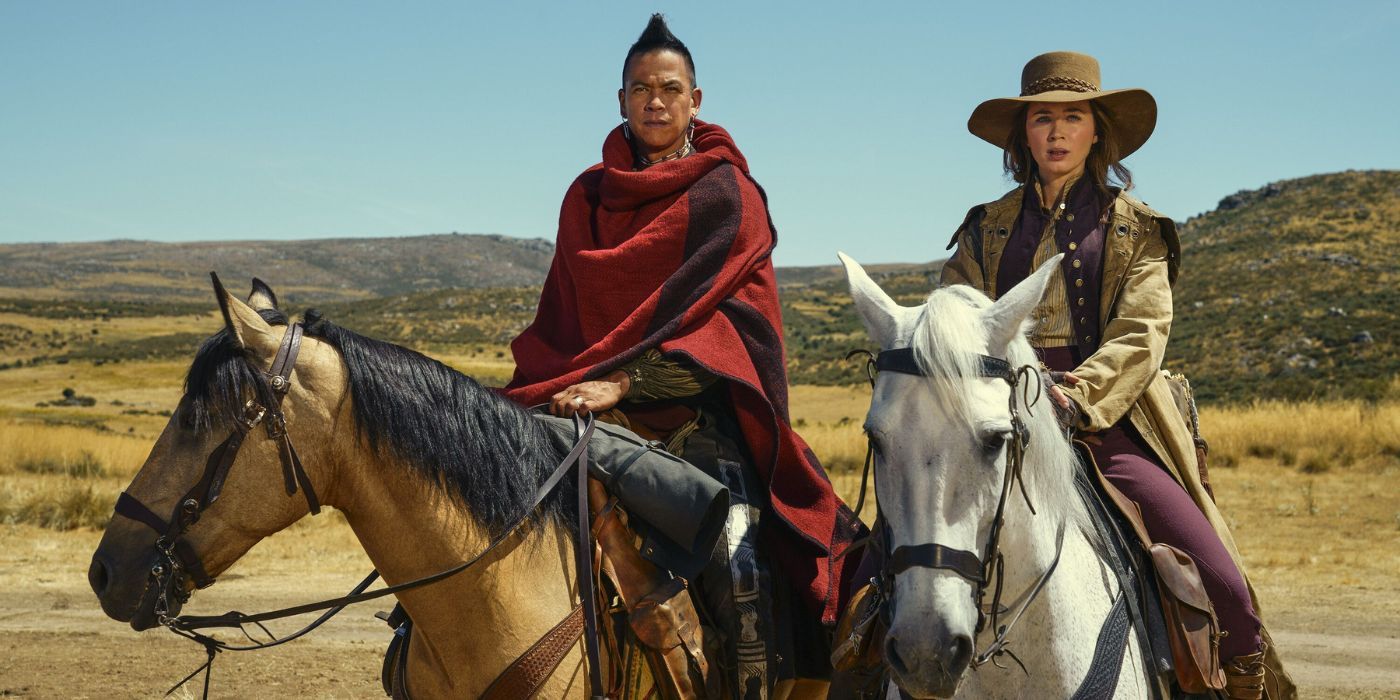
One of the Best Modern Western Shows Is on Prime Video
While largely overlooked by television audiences, Emily Blunt's western miniseries, The English, is certainly worthy of far more attention and praise.The Wild Bunch explores this paradigm shift through its characters. Long gone are the days of Western heroes played by John Wayne and Henry Fonda. In The Wild Bunch, the heroes are anything but heroes. The film's central characters are outlaws who get enormous pleasure from killing and stealing, they completely lack morality and are ruled by self-interest and self-preservation. Even more despicable than the protagonists are the bounty hunters tasked with killing Bishop and his gang. These men will do anything for money. They argue over which one gets the prize money for their kills, rush like rats to retrieve valuables from dead bodies, and have no issue murdering innocent civilians.
One of the more fascinating characters in The Wild Bunch is the railroad agent Pat Harrigan. Representative of a corporate capitalist, Harrigan epitomizes The Wild Bunch's overarching theme of the closing of one era and the beginning of a new era. It is 1913, the Wild West is quickly fading as the rise of industrialization fully takes hold of society. Bandits and outlaws are becoming extinct. What Peckinpah reveals through the character of Harrigan is that the world's new villains are the vulture-like capitalists who let money dictate their entire existence. Instead of showing audiences how the United States came to be the greatest civilized nation, Peckinpah uses The Wild Bunch to show how America became ruled by greedy corporations and officials who were wholeheartedly responsible for the tumultuous social unrest of the 1960s.
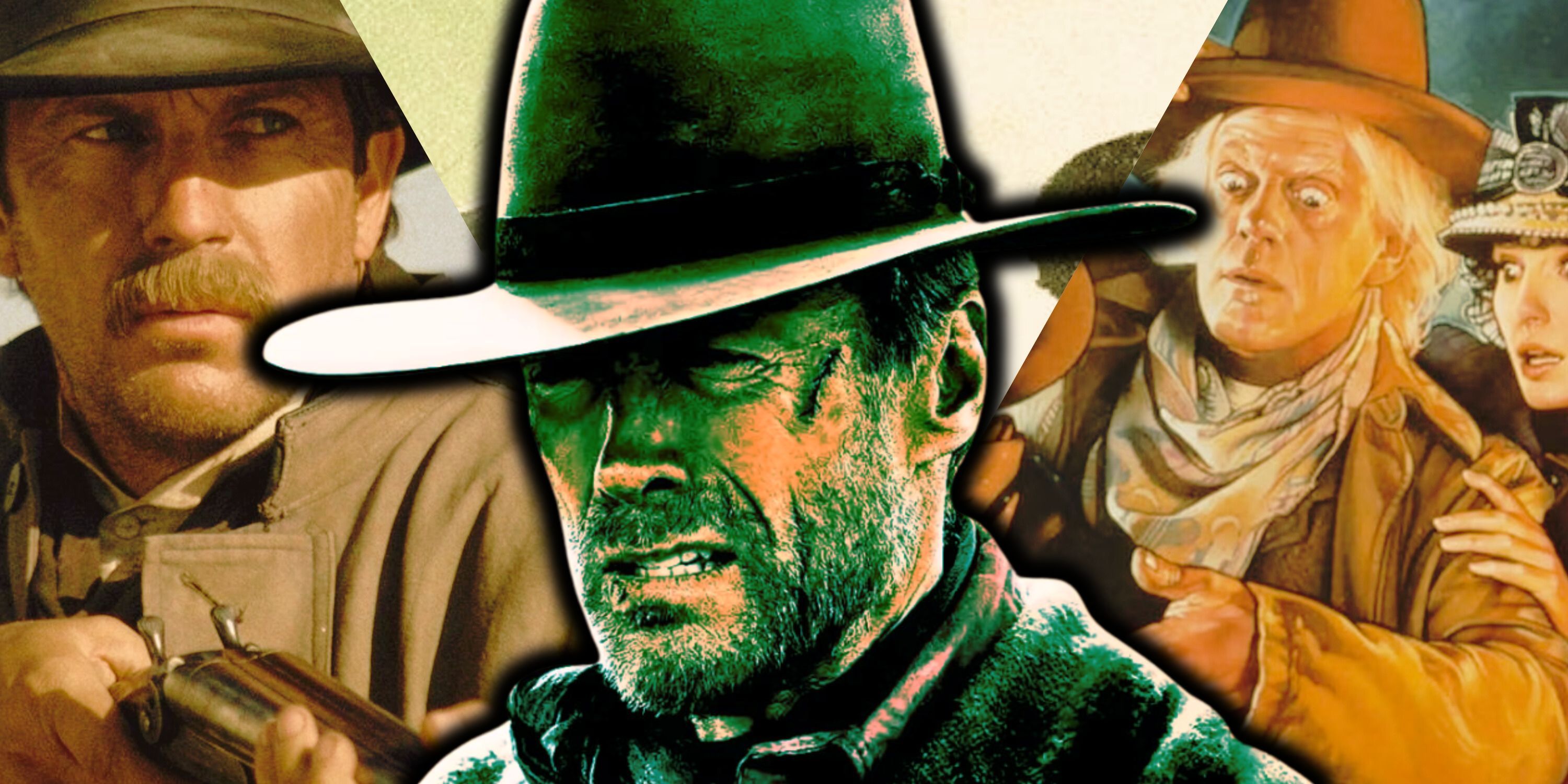
10 Best '90s Western Movies, Ranked
Although Westerns hit their peak in the mid-1900s, the '90s still saw the release of several high-profile films within the genre.The aggressive criticisms of American society and its ultra-violent content made The Wild Bunch one of the most controversial films ever made. At the time of its initial release, The Wild Bunch received a polarizing reception, with some thinking it was a masterpiece and others believing Peckinpah went too far. Today, the movie is almost universally considered one of the most important cinematic works of the twentieth century. The Wild Bunch's narrative content concerns the end of an era, a great irony since the film itself officially closed the door on the traditional Western of Hollywood's Golden Era.
A work of profound influence, the Western genre was forever altered after the release of The Wild Bunch. Morally ambiguous characters became a staple of the genre, as seen in Westerns such as Jeremiah Johnson and High Plains Drifter. Westerns such as The Shootist and Unforgiven would use the genre to explore themes pertaining to violence. The Assassination of Jesse James by the Coward Robert Ford and The Power of the Dog are among the many Westerns to follow The Wild Bunch in examining the mythology of the Old West. Explorations of capitalism's impact on the American frontier appear in Westerns like Blazing Saddles and First Cow. No matter how one looks at it, The Wild Bunch is unquestionably one of the most foundational works of the Western genre.
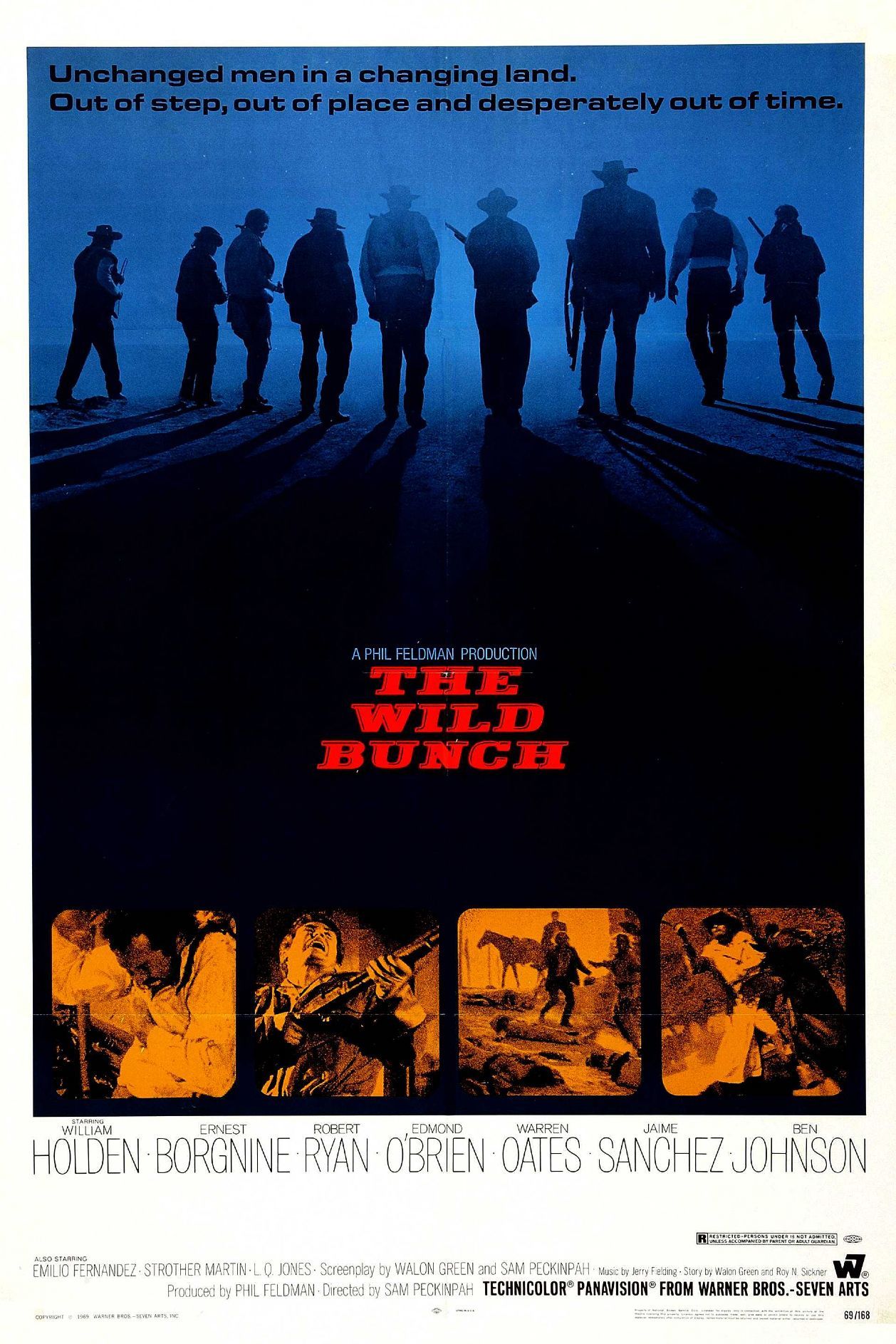
The Wild Bunch
- Director
- Sam Peckinpah
- Release Date
- June 19, 1969
- Writers
- Sam Peckinpah , Walon Green , Roy N. Sickner
- Runtime
- 135 Minutes
- Main Genre
- Action
- Studio(s)
- Warner Bros./Seven Arts
- Distributor(s)
- Warner Bros./Seven Arts

